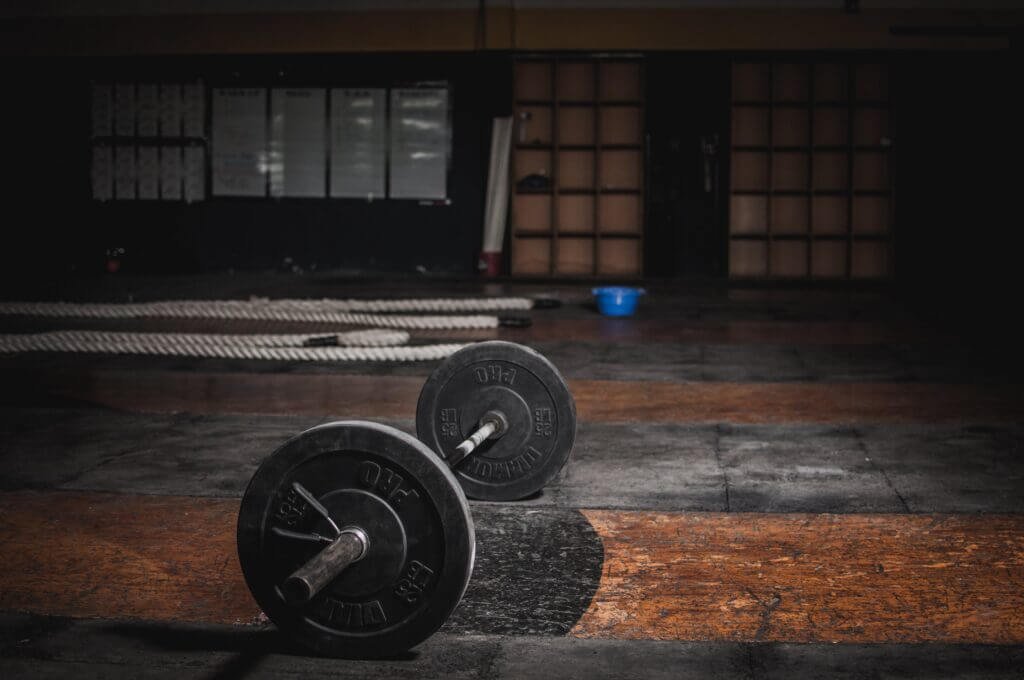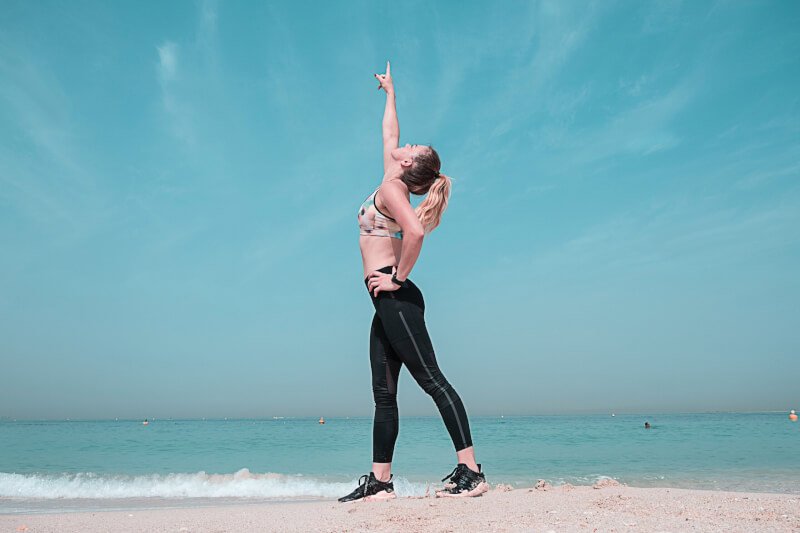So, you’ve established a home gym and you’re looking to take your workout routine to the next level. Well, one key aspect that often gets overlooked is flexibility and mobility exercises. These exercises not only improve your range of motion and prevent injuries, but they also enhance your overall fitness performance. By incorporating a few simple stretches and movements, you can unlock a whole new level of flexibility and mobility in the comfort of your own home gym. So, let’s explore some effective exercises that will help you achieve a well-rounded workout routine and make the most out of your home gym setup.

Benefits of Flexibility and Mobility Exercises
Flexibility and mobility exercises offer numerous benefits that can greatly enhance your overall fitness and well-being. By incorporating these exercises into your home gym routine, you can enjoy improved range of motion, enhanced athletic performance, reduced risk of injuries, relief from muscle tension and tightness, as well as improved posture and alignment.
Improved range of motion
One of the primary benefits of flexibility and mobility exercises is improved range of motion. When you regularly perform stretching and mobility exercises, you gradually increase the flexibility of your muscles and joints. This increased range of motion allows you to move more freely and with less restriction in your daily activities and workouts. Whether you’re reaching for something on a high shelf or performing a deep squat, improved range of motion enables you to better navigate your movements and perform tasks with ease.
Enhanced athletic performance
Flexibility and mobility exercises play a crucial role in enhancing athletic performance. By increasing your flexibility and mobility, you can improve your overall athletic abilities, such as speed, agility, and power. Flexibility and mobility help optimize muscle activation and coordination, allowing you to generate more force and perform movements with greater efficiency. Whether you’re a competitive athlete or simply enjoy participating in sports and fitness activities, incorporating flexibility and mobility exercises into your routine can give you a competitive edge and help you reach your fitness goals.
Reduced risk of injuries
Flexibility and mobility exercises are essential for reducing the risk of injuries. By improving your flexibility and mobility, you enhance the resilience and durability of your muscles and joints. This increased flexibility allows your body to absorb and distribute forces more efficiently, reducing the likelihood of strains, sprains, and other injuries. Additionally, flexibility exercises help improve the alignment and posture of your body, reducing the strain on specific body parts and minimizing the risk of overuse injuries. By dedicating time to flexibility and mobility exercises, you can create a strong foundation that supports your overall fitness and prevents injuries.
Relief from muscle tension and tightness
Incorporating flexibility and mobility exercises into your home gym routine can provide relief from muscle tension and tightness. Modern lifestyles often involve long periods of sitting and sedentary behavior, which can lead to muscle imbalances and tightness. Flexibility exercises help lengthen and stretch tight muscles, improving blood flow and promoting relaxation. Enhanced muscular flexibility and mobility help alleviate muscular imbalances and tightness, reducing the risk of chronic pain and discomfort. By regularly performing flexibility exercises, you can release muscle tension, improve muscle function, and experience a greater sense of physical well-being.
Improved posture and alignment
Another significant benefit of flexibility and mobility exercises is improved posture and alignment. Many people spend a significant amount of time sitting or performing activities that promote poor posture, such as hunching over a computer or slouching while watching TV. Over time, these habits can lead to imbalances in your muscles and negatively affect your posture. Flexibility exercises help lengthen and strengthen the muscles responsible for maintaining proper posture, promoting better alignment and reducing the risk of postural issues. By incorporating flexibility and mobility exercises into your home gym routine, you can improve your posture, alleviate muscle imbalances, and develop a strong and balanced physique.
Types of Flexibility Exercises
When incorporating flexibility exercises into your home gym routine, it’s essential to understand the different types of exercises available. Here are some common types of flexibility exercises:
Static stretching
Static stretching involves holding a stretch for a period of time, typically between 15 to 60 seconds. This type of stretching helps improve muscle flexibility and relaxes muscle tension. Static stretching is often performed after a workout to cool down and lengthen the muscles.
Dynamic stretching
Dynamic stretching involves performing controlled movements through a full range of motion. Unlike static stretching, dynamic stretching involves continuous movement and is usually performed at a faster pace. Dynamic stretching helps warm up the muscles, increase blood flow, and improve mobility before a workout or physical activity.
Active stretching
Active stretching involves using your own muscles to stretch and move a joint through its full range of motion. It requires strength and control as you hold and perform the stretches without external assistance. Active stretching helps improve flexibility, muscular control, and joint stability.
Passive stretching
Passive stretching involves using an external force, such as a partner, a stretching device, or gravity, to assist in the stretch. In passive stretching, you relax the muscle being stretched while an external force applies the stretch. This type of stretching is often used in partner stretching or when utilizing equipment such as stretching straps or bands.
PNF stretching
PNF stretching, or proprioceptive neuromuscular facilitation stretching, involves combining passive stretching and isometric contractions to improve flexibility. By alternating between contracting and relaxing the muscle being stretched, PNF stretching helps overcome the body’s natural resistance to stretch and can lead to greater gains in flexibility.

Selecting the Right Mobility Exercises
In addition to flexibility exercises, incorporating mobility exercises into your home gym routine is crucial. Mobility exercises focus on improving joint mobility, stability, and control. When selecting mobility exercises, there are several factors to consider:
Understanding your body’s limitations
Before selecting mobility exercises, it’s important to understand your body’s limitations. Take into account any past injuries or mobility restrictions you may have. Listen to your body and choose exercises that are within your current capabilities while gradually working towards greater mobility.
Targeting specific muscle groups
Identify specific muscle groups or joints that require improved mobility. For example, if you’re experiencing limited shoulder mobility, focus on exercises that target the shoulder joint and surrounding muscles. By targeting specific areas, you can effectively improve mobility in those regions.
Incorporating full-body mobility exercises
While it’s important to target specific muscle groups, incorporating full-body mobility exercises is equally important. Full-body exercises help improve overall joint mobility and coordination, allowing for better functional movement. Integrating exercises like yoga or Pilates into your routine can provide a comprehensive approach to mobility training.
Progressive overload for mobility training
Similar to strength training, progressive overload is essential for effective mobility training. Start with exercises that match your current mobility level and gradually increase the difficulty or intensity over time. This progressive approach allows your body to adapt and steadily improve mobility without overstressing the joints.
Balancing mobility exercises with strength training
When selecting mobility exercises, it’s important to strike a balance between mobility and strength training. Both components are crucial for overall fitness and should complement each other. By incorporating strength training exercises that focus on stabilizing and strengthening the joints, you can support and enhance the gains from mobility exercises.
Incorporating Flexibility and Mobility Exercises into Your Home Gym Routine
Now that you understand the benefits of flexibility and mobility exercises and how to select the right exercises, let’s explore how you can incorporate these exercises into your home gym routine:
Warm-up with dynamic stretches
Before starting your workout, warm up your muscles and prepare them for the movements ahead with dynamic stretches. These can include leg swings, arm circles, or trunk rotations. Dynamic stretching helps increase blood flow, raise body temperature, and improve overall mobility.
Include static stretches after workouts
After your workout, incorporate static stretches to cool down your body and improve muscular flexibility. Focus on stretching the major muscle groups you engaged during your workout, holding each stretch for 15 to 60 seconds. This helps relax the muscles and improve flexibility.
Split your routine into upper and lower body stretches
To ensure a balanced flexibility and mobility routine, split your routine into upper and lower body stretches. Dedicate separate sessions to target the muscles and joints in your upper and lower body, allowing ample time to focus on each area for maximum flexibility gains.
Use foam rollers or massage balls for self-myofascial release
Incorporate self-myofascial release techniques using foam rollers or massage balls to release tension and knots in your muscles. Roll the foam roller or massage ball over tight areas, applying gentle pressure to promote blood flow and improve muscle recovery.
Incorporate yoga or Pilates exercises for flexibility
Consider incorporating yoga or Pilates exercises into your routine for improved flexibility and mobility. These disciplines help strengthen and stretch the muscles while promoting balance, stability, and alignment. Choose beginner-friendly routines or attend virtual classes to learn proper form and technique.
Add resistance bands for assisted stretching
For targeted and controlled stretching, incorporate resistance bands into your routine. Attach the bands to a stable anchor point and use them to assist in stretching various muscle groups. Resistance bands provide added resistance that challenges the muscles and improves flexibility.
Utilize mobility tools like mobility balls or bars
To further improve joint mobility and range of motion, utilize mobility tools such as mobility balls or bars. These tools can provide targeted pressure and assistance to specific areas, helping to release tension and improve joint mobility.
Include balance exercises to improve stability and mobility
Balance exercises are an essential component of flexibility and mobility training. By improving your balance and stability, you enhance your body’s ability to control movements and prevent falls or injuries. Incorporate exercises like single-leg stands, yoga poses, or balance boards into your routine to strengthen your balance and enhance mobility.
Combine mobility exercises with strength training
To create a well-rounded fitness routine, combine mobility exercises with strength training. Strength training helps support and stabilize your joints, improving overall mobility and reducing the risk of injuries. Alternate between mobility exercises and strength training exercises to reap the benefits of both components.
Set aside dedicated time for flexibility and mobility workouts
To ensure consistency, set aside dedicated time for flexibility and mobility workouts. Treat them with the same importance as your regular workouts. Schedule specific days or times each week to focus solely on your flexibility and mobility exercises, allowing your body ample time to adapt and improve.

Tips for an Effective Flexibility and Mobility Routine
To make the most of your flexibility and mobility routine, consider the following tips:
Start slowly and gradually increase intensity
When starting a new flexibility and mobility routine, it’s essential to start slowly and gradually increase the intensity. Rushing into intense stretches or exercises can result in injuries or excessive soreness. Begin with gentle stretches and slowly increase the duration and intensity over time.
Listen to your body and avoid overstretching
Pay attention to your body’s cues during flexibility and mobility exercises. Avoid pushing beyond your body’s limitations or forcing yourself into uncomfortable positions. Respect your body’s feedback and avoid overstretching, which can lead to strains or injuries.
Breathe deeply and focus on relaxation during stretches
During stretches, focus on deep breaths and relaxation. Deep breathing helps oxygenate the muscles and promotes relaxation, allowing for deeper stretches and improved flexibility. Avoid shallow breathing and tension in your muscles, as it can restrict the effectiveness of the stretches.
Make it a habit and be consistent
Consistency is key when it comes to flexibility and mobility exercises. Make it a habit to incorporate these exercises into your routine regularly. Consistency allows for progressive gains in flexibility and mobility, ensuring long-term results and preventing regression.
Seek guidance from a professional or trainer
If you’re new to flexibility and mobility exercises or have specific goals in mind, consider seeking guidance from a professional or trainer. They can provide personalized guidance, assess your current mobility level, and design a routine tailored to your needs and abilities.
Modify exercises to suit your fitness level
Remember to modify exercises to suit your fitness level. Not all exercises will be suitable for everyone, especially if you’re dealing with injuries or mobility restrictions. Don’t hesitate to modify exercises or seek alternative options that work best for your body and fitness level.
Stay hydrated before and after your routine
Proper hydration is essential for maintaining muscle elasticity and overall physical function. Drink an adequate amount of water before and after your flexibility and mobility routine to optimize performance and recovery.
Allow for proper rest and recovery
Just like any other form of exercise, flexibility and mobility exercises require proper rest and recovery. Give your body enough time to recuperate between sessions to prevent overuse injuries or burnout. Balance your routine with active rest days or alternate between high-intensity workouts and flexibility/mobility sessions.
Monitor your progress and adjust your routine accordingly
Keep track of your progress to see how your flexibility and mobility are improving. Regularly assess your range of motion, strength, and overall mobility to determine if adjustments or modifications to your routine are necessary. This allows you to tailor your flexibility and mobility routine to best suit your goals and needs.
Stay motivated by setting goals and tracking improvements
Stay motivated by setting specific goals related to your flexibility and mobility improvements. Whether it’s touching your toes, achieving a certain yoga pose, or simply improving your overall flexibility, having goals can keep you focused and motivated. Track your progress and celebrate each milestone along the way.
Common Mistakes to Avoid
To ensure an effective and safe flexibility and mobility routine, it’s important to avoid these common mistakes:
Skipping warm-up exercises
Skipping warm-up exercises can increase the risk of injuries and limit the effectiveness of your flexibility and mobility routine. Always start your session with a proper warm-up to prepare your muscles and joints for the exercises ahead.
Bouncing or using excessive force during stretches
Avoid bouncing or using excessive force during stretches, as this can strain your muscles and lead to injuries. Instead, focus on controlled and gradual movements to safely stretch your muscles and improve flexibility.
Pushing through pain or discomfort
Never push through pain or discomfort during flexibility and mobility exercises. Pain is your body’s way of signaling that something is wrong. If you experience any pain or discomfort, stop the exercise and consult a healthcare professional or trainer for guidance.
Neglecting certain muscle groups
Make sure to target all muscle groups and joints in your flexibility and mobility routine. Neglecting specific muscle groups can lead to imbalances and limited mobility in those areas. Take a comprehensive approach and ensure you’re addressing all areas of your body.
Not giving enough time for recovery
Proper recovery is crucial for flexibility and mobility gains. Avoid overtraining and allow your body enough time to recover between sessions. Adequate rest promotes muscle repair and growth, preventing fatigue and injury.
Failing to track progress and make adjustments
Tracking your progress allows you to make informed adjustments to your routine. Without monitoring your flexibility and mobility gains, it’s difficult to identify areas that require improvement or modify your routine accordingly.
Inadequate form and technique
Maintaining proper form and technique is essential for effective and safe flexibility and mobility exercises. Improper form can limit the effectiveness of the stretches and increase the risk of injuries. Take the time to learn the correct form and technique for each exercise to maximize the benefits.
Rushing through stretches without proper focus
Flexibility and mobility exercises require focus and mindful engagement. Avoid rushing through stretches or mindlessly going through the motions. Focus on proper alignment, breathing, and relaxation during each stretch to optimize its effectiveness.
Ignoring the importance of consistency
Consistency is key when it comes to flexibility and mobility training. Skipping sessions or being inconsistent with your routine can hinder progress and prevent you from achieving your goals. Stick to a regular schedule and make flexibility and mobility exercises a priority.
Neglecting flexibility and mobility altogether
Perhaps the biggest mistake is neglecting flexibility and mobility exercises altogether. Many people prioritize strength training or cardiovascular exercises while neglecting the importance of flexibility and mobility. Remember that flexibility and mobility are essential components of overall fitness and should not be overlooked.
Conclusion
Incorporating flexibility and mobility exercises into your home gym routine offers numerous benefits. Improved range of motion, enhanced athletic performance, reduced risk of injuries, relief from muscle tension, and improved posture are just a few of the advantages you can experience by incorporating these exercises into your workouts.
By understanding the different types of flexibility exercises and selecting the right mobility exercises, you can create a well-rounded routine that targets specific muscle groups, supports your overall fitness, and promotes optimal mobility and flexibility.
Remember to warm up with dynamic stretches, include static stretches after workouts, split your routine into upper and lower body stretches, and utilize tools such as foam rollers and resistance bands. Balance your flexibility and mobility routine with strength training, incorporate full-body mobility exercises, and allocate dedicated time for these exercises in your schedule.
Follow the tips for an effective flexibility and mobility routine, avoid common mistakes, and always listen to your body. With consistency, determination, and a focus on progress, you can improve your flexibility, mobility, and overall well-being in the comfort of your own home gym. So why wait? Start incorporating flexibility and mobility exercises into your routine today and reap the countless benefits they offer.


